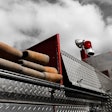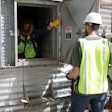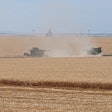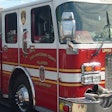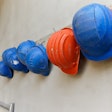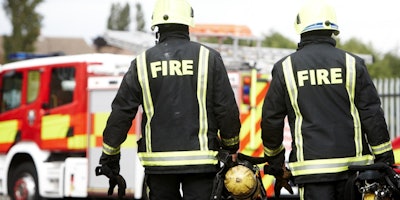
Each year dozens of people are injured or killed in the United States by grain bin entrapment at grain elevators and feed mills. The fortunate victims who make it out unharmed usually owe their lives to a well-trained rescue team armed with the proper equipment, and it's an elevator or mill manager’s responsibility to make sure there is a team nearby to provide those services.
According to OSHA regulations, you may not depend on 911 or local first responders as an emergency rescue plan unless the fire department has documentation in writing that it’s equipped and trained to handle rescues particular to grain bin entrapment.
Jeff Decker, president and owner of Decker Consulting, based in Lerna, IL, says grain elevator managers should schedule meetings and facility tours with their local fire departments at least annually, if not more, to provide the proper training and resources needed to achieve a positive outcome should a grain entrapment occur.
Initial tour
Whether it’s because of a newly built facility, a new fire chief or there’s been a lapse in communication for a long period, an initial facility tour should go over the general layout of the facility as well as three essential areas:
- Confined spaces. Towers, headhouses or other areas that require high angle rope rescue equipment to get somebody out of or down.
- Chemical storage areas. Phosphine tablets are of particular concern because they can potentially explode if the fire department sprays them with water.
It’s important to note changes in chemical storage throughout the year, Decker says. “There are times when some elevators have warehouses full of chemicals that are sold to farmers and at other times of year it’s an empty warehouse or full of grain. Understanding the type of hazards the fire department will encounter is critical.” - Locations of the utilities, including power, water, gas and liquid propane. Be sure to identify individual shut-off locations as well as a master shut-off.
Decker says it’s also important to clearly label and mark the bins, barns, buildings, etc. at your facility especially for emergency purposes.
“If the plans provided say a master shut-off is in building five, but they can’t locate it, it does the rescue effort no good,” Decker says.
Rescue training
While it’s imperative for fire departments to have a lay of the land, it’s equally as crucial for them to know how to respond in case of a grain bin entrapment.
Your company likely has a safety department and training resources to provide a training session for the local fire department. If not, consider hiring a consulting firm to conduct a training session at your facility. Many firms have a tractor trailer or a traveling system that can come to your facility and simulate a grain bin rescue using a grain cofferdam — or tube — to extract the victim.
德克尔建议training all employees at feed and grain facilities on how to use a grain cofferdam, which is a tube roughly four- to five-foot long that is inserted around the victim to prevent grain from reaching their chest and airway.
But there is more to a grain engulfment rescue than deploying a cofferdam, Decker says.
“If the victim is totally engulfed under the grain, more people and training are required because we’re not deploying a rescue tube initially,” he says. “You’ve got to first cut the bin and remove grain, which requires more manpower and people who have been trained on the safety plan.”
After the department has done the initial tour and had sufficient training, mill or elevator managers must maintain a relationship with the fire chief, continue to provide training resources to the department and invite them to visit the facility on a regular basis.
Follow-up visits
Decker recommends inviting the fire chief to your facility semi-annually or annually. With turnover and new fire fighters joining the department, ask the fire chief to bring new employees and volunteers to each visit.
“In volunteer fire departments that are required to complete a certain amount hours of training per year, make sure one or two of those hours are at your facility,” Decker says.
Building a relationship between grain facilities and fire departments benefits the entire community.
“In rural areas, everybody knows everybody,” Decker says. “If the fire department gets called for an entrapment, it [could be] their neighbor, relative or friend, so it’s personal to them. A grain entrapment incident affects them emotionally as much as it affects the elevator employees.” ■








